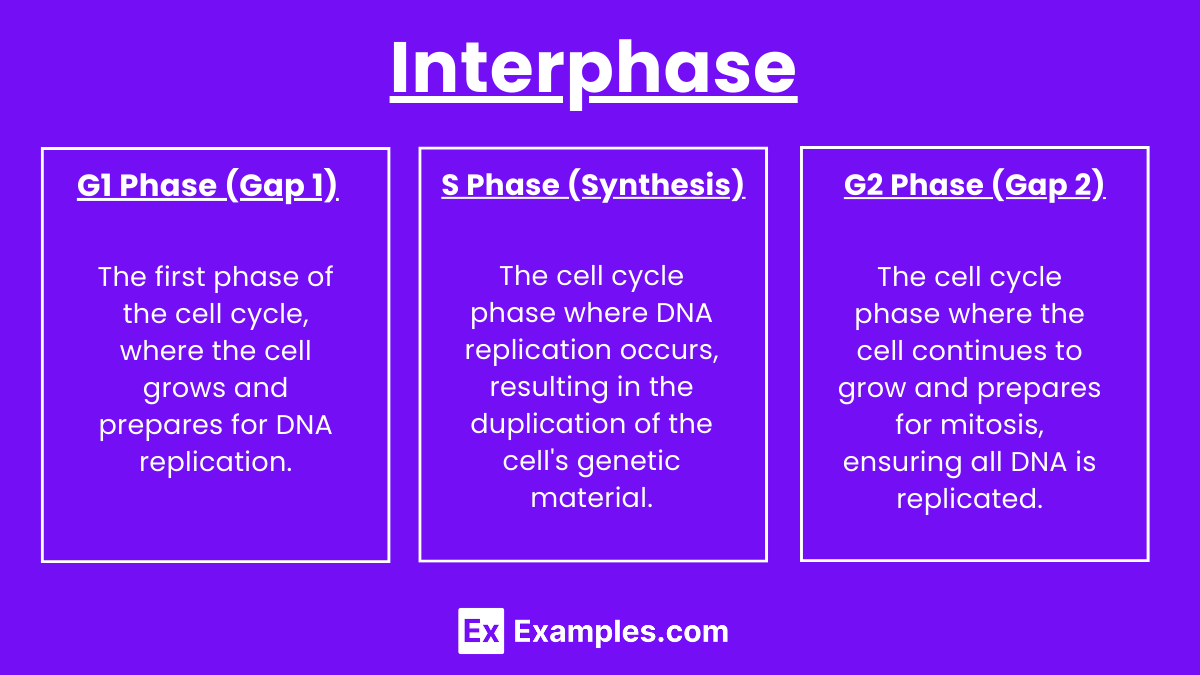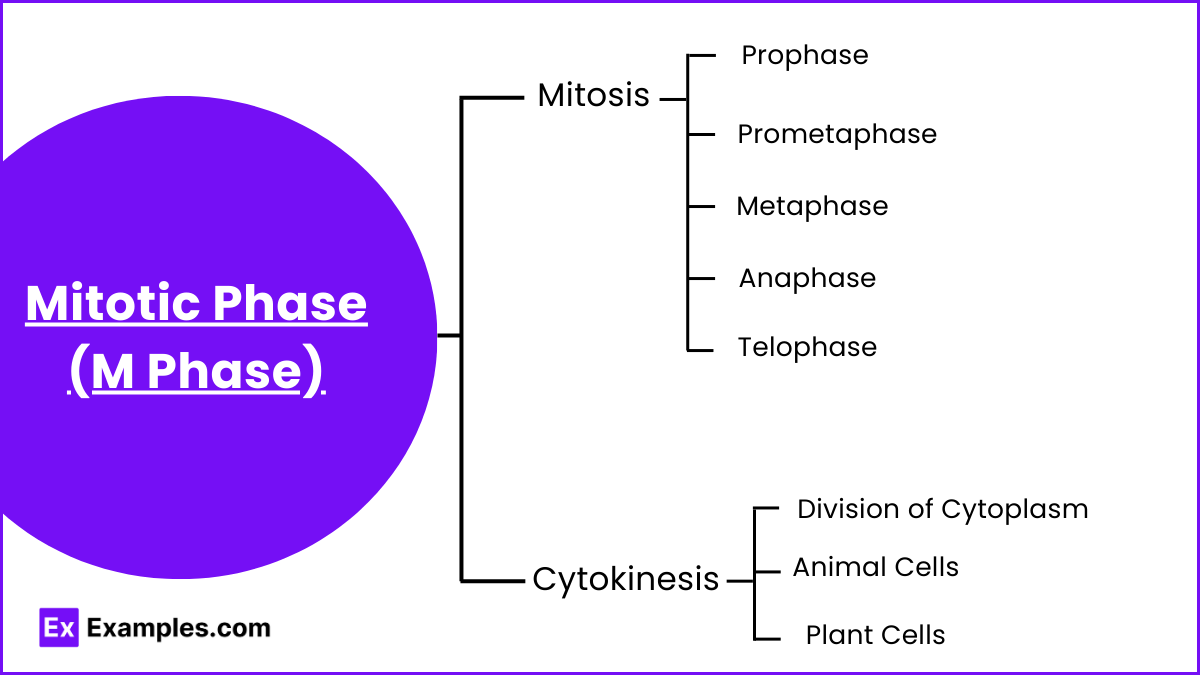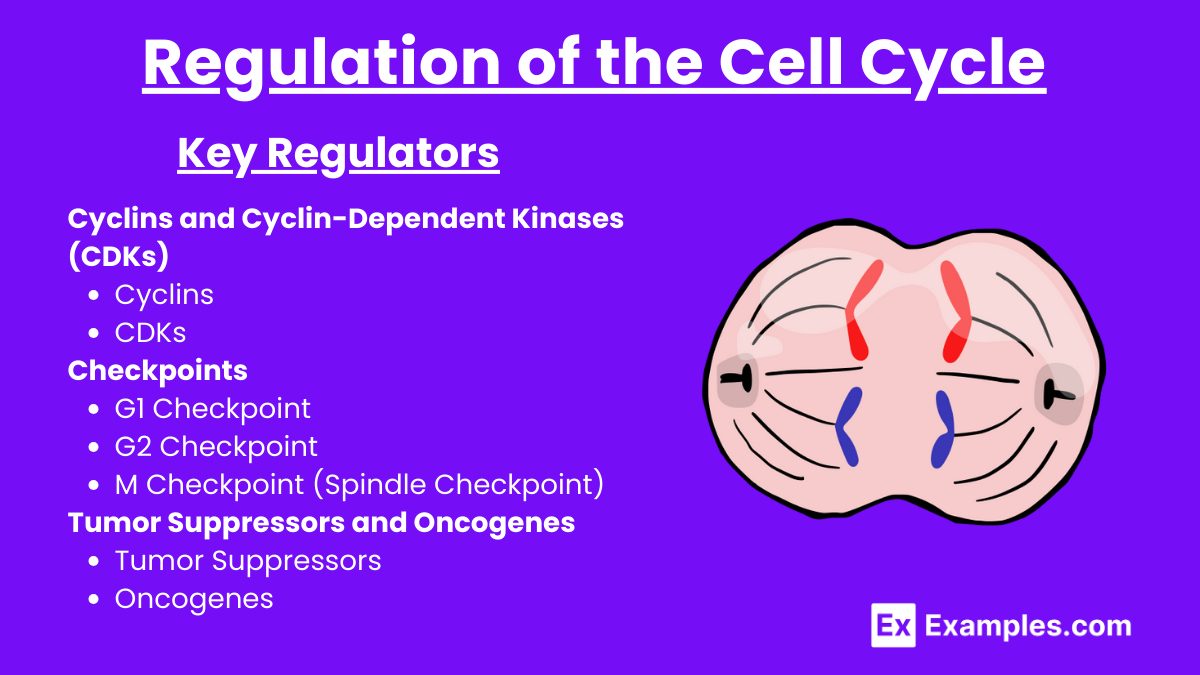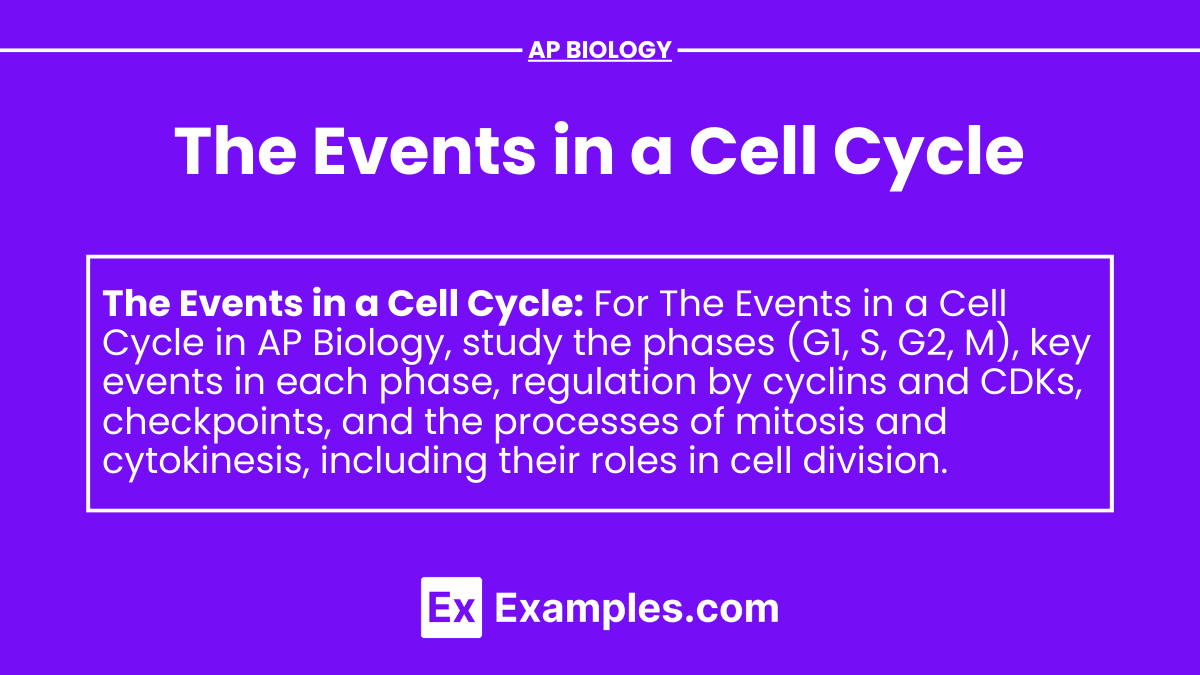In AP Biology, the cell cycle is essential for understanding cell growth and cell division. This process, fundamental to cell theory, includes stages where the nucleus and cell membrane play crucial roles in preparing for division. Though plant cells have a cell wall, they also undergo similar cycles. The cell cycle ensures that cells replicate their DNA accurately and divide properly, maintaining the continuity and function of all living organisms.
Learning Objectives
Understand how cell theory underpins the cell cycle, explore the stages and regulation of the cell cycle, and recognize the roles of the cell wall and cell membrane in different cells. Additionally, students should learn how cells use chemical energy to drive processes necessary for growth, DNA replication, and division, ensuring proper cellular function and continuity.
Overview of the Cell Cycle
The cell cycle consists of two major phases: Interphase and the Mitotic Phase (M phase). Interphase is further divided into three sub-phases: G1 (Gap 1), S (Synthesis), and G2 (Gap 2).
Key Concepts
- Interphase: The phase where the cell grows and DNA is replicated.
- Mitotic Phase (M phase): The phase where the cell divides, including both mitosis and cytokinesis.
Phases of the Cell Cycle
Interphase

G1 Phase (Gap 1)
- Growth and Normal Functions: The cell grows in size, synthesizes proteins, and produces organelles.
- Preparation for DNA Replication: The cell prepares for DNA synthesis, checking for any damage and repairing it.
- G1 Checkpoint: Ensures the cell is ready for DNA replication. If conditions are not favorable, the cell may enter a resting state known as G0 phase.
S Phase (Synthesis)
- DNA Replication: The entire genome is replicated, resulting in two identical sets of chromosomes.
- Synthesis of Histones: Histone proteins are synthesized to package the newly replicated DNA.
G2 Phase (Gap 2)
- Continued Growth: The cell continues to grow and produces proteins necessary for mitosis.
- Preparation for Mitosis: The cell checks for DNA damage and repairs it, ensuring the cell is ready for division.
- G2 Checkpoint: Ensures all DNA is replicated and undamaged before proceeding to mitosis.
Mitotic Phase (M Phase)

The Mitotic Phase includes mitosis and cytokinesis, resulting in two genetically identical daughter cells.
Mitosis
Mitosis is divided into five stages:
- Prophase:
- Chromosome Condensation: Chromatin condenses into visible chromosomes, each consisting of two sister chromatids.
- Nuclear Envelope Breakdown: The nuclear envelope begins to disintegrate.
- Mitotic Spindle Formation: Spindle fibers begin to form from the centrosomes.
- Prometaphase:
- Spindle Fiber Attachment: Spindle fibers attach to the kinetochores on the centromeres of the chromosomes.
- Complete Nuclear Envelope Breakdown: The nuclear envelope is fully disintegrated.
- Metaphase:
- Chromosome Alignment: Chromosomes align at the metaphase plate, an imaginary line equidistant from the spindle poles.
- Metaphase Checkpoint: Ensures all chromosomes are properly attached to the spindle fibers before proceeding to anaphase.
- Anaphase:
- Sister Chromatid Separation: Sister chromatids are pulled apart by the spindle fibers toward opposite poles of the cell.
- Cell Elongation: The cell elongates as the poles move further apart.
- Telophase:
- Chromosome De-condensation: Chromosomes begin to uncoil back into chromatin.
- Nuclear Envelope Reformation: Nuclear envelopes reform around each set of chromosomes.
- Spindle Disassembly: The mitotic spindle disassembles.
Cytokinesis
- Division of Cytoplasm: The cytoplasm divides, forming two daughter cells, each with a complete set of organelles and a nucleus.
- Animal Cells: The cell membrane pinches inwards, forming a cleavage furrow.
- Plant Cells: A cell plate forms in the middle of the cell, developing into a new cell wall.
Regulation of the Cell Cycle

The cell cycle is tightly regulated by various proteins and checkpoints to ensure proper division and prevent errors.
Key Regulators
- Cyclins and Cyclin-Dependent Kinases (CDKs):
- Cyclins: Proteins whose levels fluctuate during the cell cycle.
- CDKs: Enzymes that, when activated by cyclins, phosphorylate target proteins to drive cell cycle progression.
- Checkpoints:
- G1 Checkpoint: Ensures conditions are favorable for DNA synthesis.
- G2 Checkpoint: Confirms all DNA is replicated and undamaged.
- M Checkpoint (Spindle Checkpoint): Verifies all chromosomes are properly attached to the spindle fibers before anaphase.
- Tumor Suppressors and Oncogenes:
- Tumor Suppressors: Proteins like p53 that halt the cell cycle in response to DNA damage.
- Oncogenes: Mutated genes that can cause uncontrolled cell division if not properly regulated.


